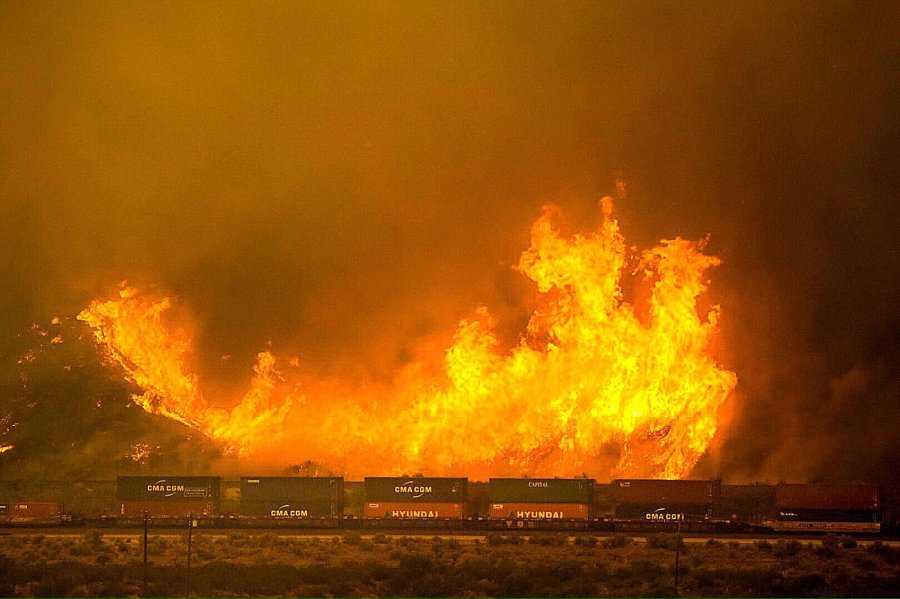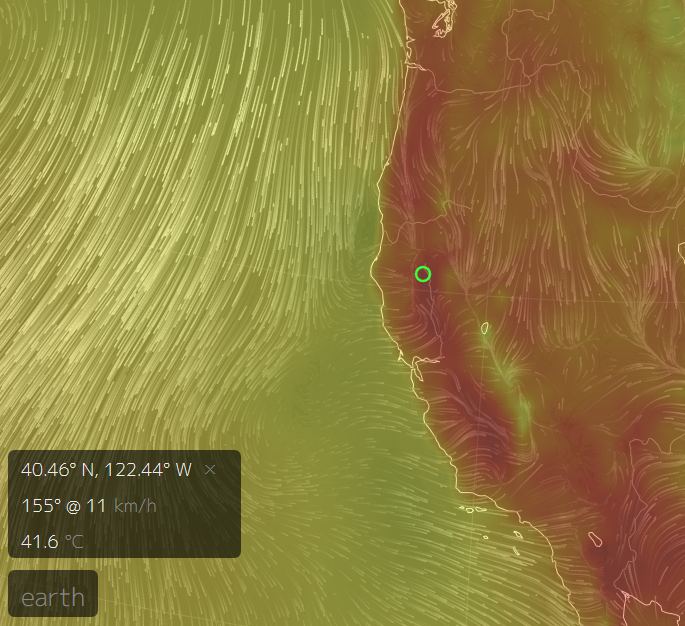Zero Percent Contained — Blue Cut Fire Explodes to 30,000 Acres, Forces 82,000 People to Flee
Rising
temperatures. Deepening drought. Worsening wildfires. Such are the
new climate realities for the State of California in a record-hot
world.
*****
17
August, 2016
Yesterday,
amid 100-degree heat and blustery winds, and on the back of a
devastating drought nearing the close of its fifth year, a
dangerous wildfire sparked in the Cajon Pass in San Bernardino
County.
Originating near Interstate 15 at 10:30 AM Tuesday, the blaze
fed on the heat, strong winds, and bone-dry brush. In just two hours,
the fire had exploded to 1,500 acres in size. Fanning out, it began
to threaten homes and buildings within this well-known section of
southern California.
By
early afternoon, emergency officials were scrambling to get ahead of
the fire. More
than 750 firefighters were mobilized as
neighborhood after neighborhood emptied before the gigantic walls of
smoke and flame. Sheriffs hurried from door to door, urging
people to leave or notify next of kin. Residents spilled onto
roadways shrouded by darkness as towering pillars of black burst into
the skies above them. Joining together in long trains of cars, they
formed a press of 82,000 fleeing the fire. By evening, homes along
Highway 138 were engulfed, a local McDonald’s burned, and
the famous Summit Inn on historic Route 66 was consumed to its
foundations.
As
of late Tuesday, the fire had swelled to 15,000 acres; Governor Jerry
Brown declared a state of emergency. Numerous structures including
multiple ranches and communities had been surrounded or invaded by
fire. Tracey Martinez, Public Information Officer for the San
Bernardino County Fire Department, made this announcement:
“We know that we’ve lost structures, it’s unknown how many at this time. This fire is still raging out of control.”
(Train
passes in front of a section of the Blue Cut Fire in San Bernardino
County, California on Tuesday. Image source: CALFIRE.)
Throughout
the night, the fire continued to engorge even as more emergency
personnel rushed to the scene. Burning embers, lofted on the
updraft created by the fire, rained down upon the region. Spot fires
ignited as the main body of the blaze expanded. As of early morning
on Wednesday the fire had spread to 30,000 acres. At least 1,300
firefighters, 152 engines, 18 fire crews and ten air
tankers were involved in fighting the blaze by that time. Despite
this enormous effort on the part of emergency personnel, the fire was
still zero percent contained.
Extreme
Weather Worsens Risk, Produces Multiple Fires
On
Wednesday, the
weather forecast called for near-100 degree temperatures, very low
humidity, and light winds in the San Bernardino area. Such
conditions represent continued risk for fire expansion, though
lighter winds may provide some slight aid to the hundreds of
firefighters now on the ground.
(Predicted
west coast temperatures for Friday afternoon show readings in the
upper 90s and 100s stretching into northern California, Oregon, and
Washington. It’s exactly the kind of heat and dryness that can
increase fire danger. Image source: Earth
Nullschool.)
This
weather pattern is part of a larger heatwave sprawling up and down
the U.S. west coast. The heat and dryness have fanned two additional
large fires in California over the past few days. In Clayton, a
fire scorched 4,000 acres on Tuesday, burning 100 homes.
As of Wednesday morning, this
fire was listed as only five percent contained.
A third fire, the 6,900-acre Chimney fire, is
only 25 percent contained after consuming 40 structures.
Over
the next few days, this heatwave is expected to expand northward
along the U.S. west coast, bringing with it heat and the kind of
bone-dry weather conditions that can worsen fire hazards. In
Portland, Oregon, for example, temperatures are
expected to challenge the 100-degree mark over the coming three days
as humidity plummets.
Conditions
in Context — Climate Change Increases Temperatures, Worsens Western
Drought, Increases Fire Hazard
“It hit hard, it hit fast, it hit with an intensity that we haven’t seen before.” — Mark Hartwig, San Bernardino Fire Chief.
The
Blue Cut Fire erupted during a five-year-long drought that is the
worst in California history. According to the U.S. Drought
Monitor, 33
million people in California are currently afflicted by drought
conditions.
This drought has been worsened by a human-forced warming of the
Earth’s atmosphere and oceans. Under such warming, scientists have
long warned, the risk of heat, drought, and fires increases.
This stark condition is illustrated by the great unevenness of
precipitation falling on the U.S. — in just the past seven
days, more
rain has fallen over parts of Louisiana than the
total of all the precipitation for the past fiveyears in
San Bernardino.
Now, with
global temperatures hitting near 1.2 degrees Celsius above 1880s
averages,
the pattern of persistent and worsening drought over the U.S. west
has become clear. The Blue Cut Fire emerged in this context. And
though this region of San Bernardino County has long faced fire
risks, the danger, along with the heat, is on the rise.
(UPDATES
to follow)
Links:
Hat
tip to DT Lange
Hat
tip to Colorado Bob
Hat
tip to Greg





No comments:
Post a Comment
Note: only a member of this blog may post a comment.